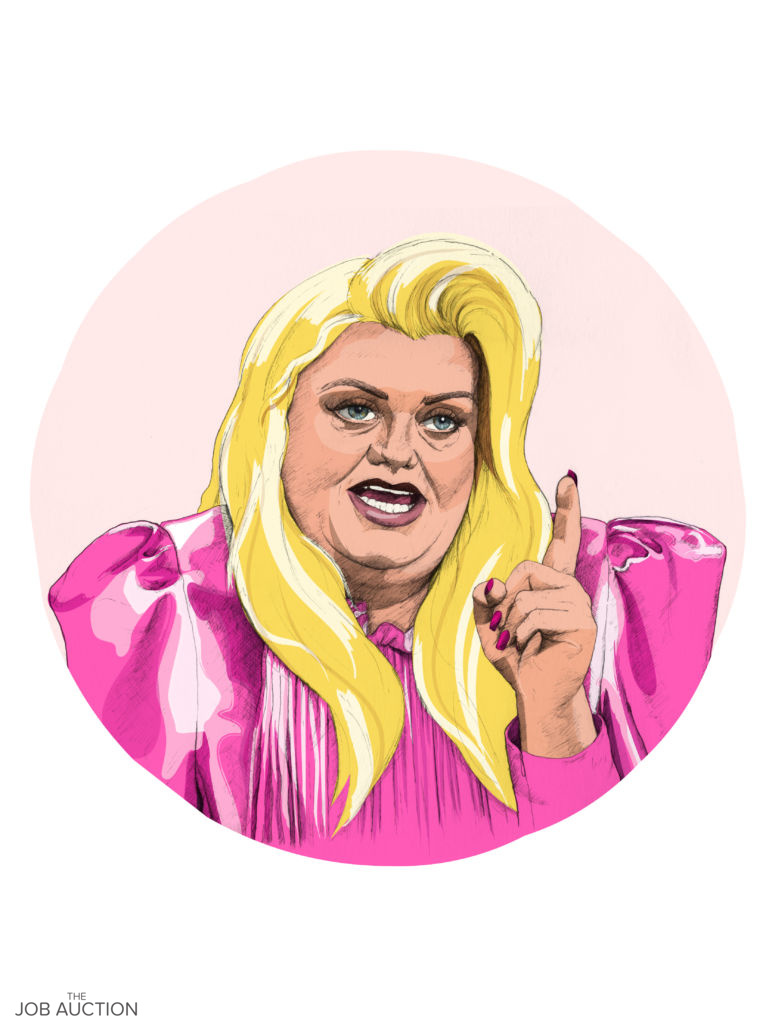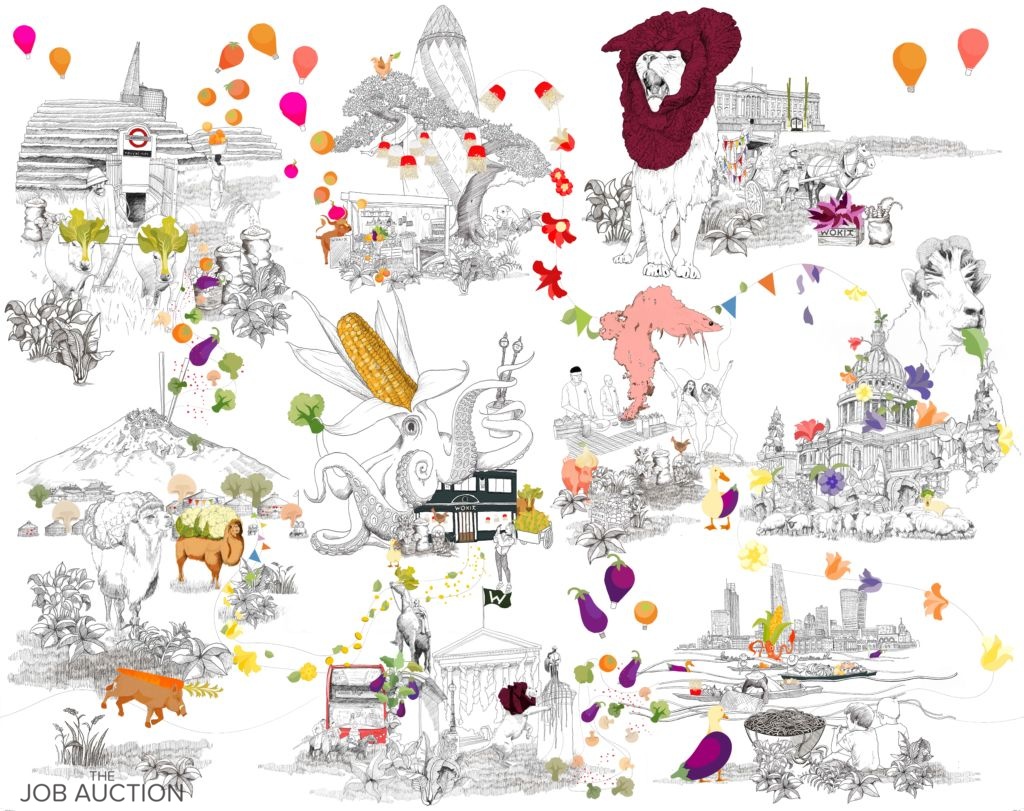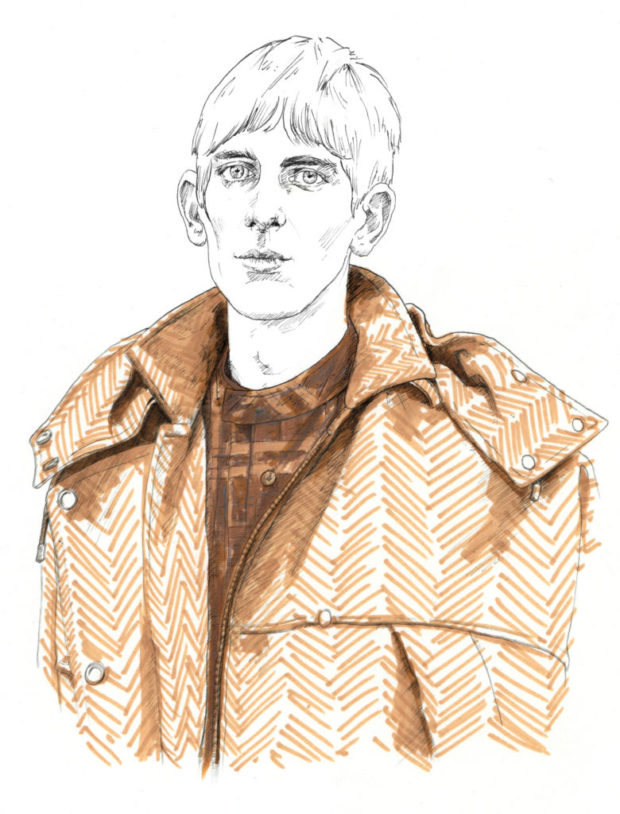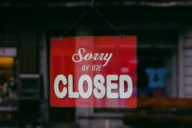Got a flair for the arts or a passion for fashion? Mark Glasgow, RCA trained fashion designer turned illustrator explains how he navigates the creative industry in London. He’s established himself as a permanent fixture for a well-known fashion brand, has his work featured in editorial publications and all over the city. He’s a hustler and his work is hot right now. Watch this space, Mark Glasgow is in town …
As a successful fashion designer working for E.Tautz & Community Clothing and self-described “occasional” illustrator, working freelance, what’s the key ingredient to keeping your work ever evolving in such a fickle industry?
Having started in fashion before branching out into illustration, the thing you learn fairly quickly is the importance of adaptability. Whether that is adapting your style for different projects or brands, or in a broader sense, evolving with the zeitgeist. Even though my work isn’t particularly trend-led, it still has to be relevant – and that’s just as true of the illustration work I do. It also helps that the drawing I do for fun usually draws on pop-culture figures who interest me at that particular time.
You’re not from London, how have you navigated the city and paved your own way here?
I’m from a small village in Northern Ireland called Donaghadee, so London was an imagined utopia for me, from my early teens. Then obviously you get here and it’s a different kettle of fish entirely. Thankfully I had moved here for my Master’s degree at the Royal College of Art, which performed the role of a little village in and of itself, and I think those two years were formative in expanding my awareness of the different kinds of creative output that I could, hypothetically, do. It also made me work incredibly hard, which has only been beneficial.

Gemma Collins, Illustration by Mark Glasgow
Is it necessary for creatives in 2018 to keep the door revolving with not only in-house work but freelance as well?
Tricky question, I think it depends what kind of person you are. I think for a lot of us who are in the early years of our careers there is a financial impetus, and it’s obviously ideal to be able to make money with something creatively rewarding. The other side is that we live in an age where you have access to all the work that other people are doing – via Instagram etc. – and I think it’s natural to look at what other people are creating and get a bit restless. My day job involves a lot of different roles under the one umbrella, so my illustration work has become an extension of that.
Does there need to be a clear distinction between your illustration and your fashion or do you feel that the two are inextricably linked?
In a way, there does need to be a clear distinction because my day job is a bigger ongoing project, and one that is more technical and logistical than a lot of people expect. Whilst there is a creative side, either in terms of design, graphics or illustration, it’s important that it’s separate in my head from the freelance illustration work I do.
You’ve worked with some bigger named brands, how has social media helped you further your career and how do you find, liaise and impress your clients?
I have been lucky to have a full-time job which allows me to kind of come across clients fairly organically, whether through them coming across me on Instagram, or more often, being recommended by a friend or client. Whilst a lot of work is for private clients, some of the work I have done has been very public, so that kind of exposure has allowed me access to some great new people.

George Michael, Illustration by Mark Glasgow
When working freelance what advice do you have for pricing work and what’s your approach from the business side in doing so?
This is something I have been forced to get better at, it’s something that you certainly aren’t taught! It’s dull but it’s important to have a contract that covers the usage rights, deadlines etc before you start, and be prepared to talk to the clients about what their expectations are. Although I find negotiating difficult, going too low and trying to undercut the market or God forbid working for free, will not only harm your future work but also other illustrators trying to get paid fairly.
Lagerfeld has often commented on the importance of studio space and identity, how important is it to have the space to create and what’s your advice here?
To be honest, although it’s unquestionably a great thing to have a studio space to have a purely creative space, it’s definitely a luxury in London for a lot of young creatives. If you can get access to one without financial endangering yourself then amazing, otherwise you sort of have to make the best of your bedroom. I don’t really feel equipped to give any advice on this as my work is basically just pen, paper, and a computer, yet I still manage to make an incredible amount of mess!
Your ability to depict your designs is obvious from your drawing skills and likewise your fashion background must stand you in good stead for illustrating, what advice would you give to a designer whose illustrations are not ‘commercially revered’ and vice versa, what advice do you have for those in illustration wanting to branch into fashion?
Whilst it certainly helped my practice, I don’t think to be a successful designer you necessarily have to be a great drawer, I’m sure that was the case in the past, but now you just have to articulate your designs successfully in some way that works for you. A lot of people who prefer not to draw are taking a different approach, whether that be collage or Photoshop, or are developing their ideas three-dimensionally and documenting them through photographs. I think it’s far more important to get your ideas across succinctly and in a way that looks good than necessarily to be a beautiful illustrator.
Having entered into illustration after fashion, I’m not sure how helpful it would be to approach it the other way around. I suppose if you’re an illustrator you have a good idea of your own style and an appreciation for line, but my experience is that so much of fashion needs to be taught, and relies on technical knowledge to execute whatever idea you have sketched or dreamt up. I think a lot of people are now questioning if that is through the traditional education system, or challenging different ways to create through evolving technology.

Illustration by Mark Glasgow for Wokit
Your work has been featured in many magazines from ID to Dazed Digital. Was yours a case of build it and they will come-success or has it been ‘hard out here’ for Mark Glasgow?
A bit of a mix, to be honest, a lot of the press that had my name “up in lights” came off the back of the Royal College of Art graduate show, which of course has great industry exposure to magazines and journalists like you mentioned. Having worked as a designer for other brands since then, you’re behind the scenes creating under the brand’s name rather than your own, which is a different experience but is still surreal and fantastic to see something you’ve been a part of suddenly out there in the world.
What is your proudest moment to date either privately or professionally?
Clichéd as this might be, it’s probably a tie between my RCA Graduation show and the show of the first collection I worked on at E. Tautz. The RCA graduating show was an incredibly proud moment because it felt like the culmination of six years of education and hard graft, and very much the purest distillation of who I am as a designer because it was all my own work, but there’s an awareness that it’s the end of being a student and the beginning of the career – but with no guarantee that there’ll be a career! Whereas with the first show at E. Tautz, there’s the sense of having “made it”, and finally have the job I had worked so hard for.
There’s a different kind of pride in my work as Design Manager at Community Clothing, because it’s more tangibly about creating jobs in the manufacturing industry, and designing an affordable product which I get to see “normal” people buying and wearing.







